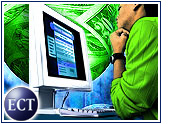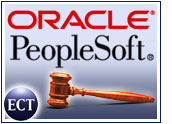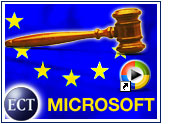
As more people choose to pay bills online rather than shelling out for stamps and envelopes, a quiet battle is taking place behind the scenes: Retail banks are squaring off against companies that bill consumers directly, such as credit-card firms and utility companies.
This skirmish for consumer attention is not simply a matter of pride for banks that want to boast about online bill-pay capabilities and user adoption. As it turns out, the most significant trait of online bill payers is loyalty, leading banks to dangle the carrot of “free services” as often as possible.
Still, this move toward free online bill payment entails trade-offs.What will be the overall impact of this trend on the banking industry?
Better Customers
People who pay bills online are not simply thrifty users who want to reduce their postage costs. In general, many of these customers have attributes that would cause any company to fight for their business.
The most significant trait of online bill payers is loyalty. When customers pay bills online through a bank, they tend to stay with that bank for a longer period of time. They also tend to have higher balances and to use more of the bank’s products, such as loans, according to Stephen Franco, managing director of the retail banking practice for Compete, one of the sponsors of April’s Net.Finance 2004 conference.
“Banks have seen the strategic importance of getting these customers,” Franco told the E-Commerce Times. “That’s why there’s such a push for getting the attention of these customers in particular.”
To try to bring in more online bill payers and keep them happy, many banks, including U.S. Bank and Bank of America, have eliminated fees for online bill payment.
“The trend is certainly toward doing away with fees,” Franco said. “But some banks still have tiered pricing levels that are dependent on things like minimum balance. They want to give customers that incentive and keep that carrot out there.”
Biller Advantage
However, although paying bills through a bank often allows a customer to pay numerous bills at once, the majority of online users do not take advantage of this feature, instead choosing to visit biller sites directly.
According to edocs, a company that provides bill-pay technology to sites, 68 percent of those who pay bills online do so with billers, not banks.
As Tim Walsh, director of corporate communications at edocs, told the E-Commerce Times: “With only one or two exceptions, online bill payment has been a huge disappointment for banks. There’s been a lot of branding done, but they haven’t gotten the adoption that they wanted.”
Billers have several advantages when it comes to winning customers’ clicks, including detailed bill summaries, faster transaction rates and account history information.
Many banks have been working to provide detailed account data on individual billers through their sites, but Walsh noted that the tactic is not gaining much traction so far. He noted that 98 percent of all e-bills were viewed directly at biller sites last year, and that trend is likely to continue. This is harsh news for banks that yearn for customer attention.
“Banks are really struggling with the economics behind charging for the [bill payment] service,” Walsh said, “because it’s costing them money.”
Smart Moves
Although consumers tend to prefer dealing directly with billers right now, banks have been making moves designed to draw more attention to their free online bill-pay features.
Franco noted that although banks generally have been slow to respond quickly in making their online bill payment as attractive as possible, many now see the wisdom in making this investment of time and money.
David Fontaine, a spokesperson for CheckFree, told the E-Commerce Times that his company has seen consistent and strong growth in the past few years. CheckFree provides bill-pay technology for banks and other financial institutions and now has more than 1,100 customers in the sector.
“We think more consumers are becoming aware of the benefits of online bill pay through banks,” he said. “The financial institutions have done a good job in terms of convincing consumers that managing things online is something they want.”
He added that to make the argument more compelling for customers, eliminatingbank fees is helping a great deal and likely will continue to do so. “We’ve seen an increase in the number of banks that have decided to go free,” he said, “and although I don’t have a crystal ball, it does seem like that will keep happening.”
Effecting Change
The impact of free bill payments for banks could be that more customers will spend time on a bank’s site rather than a biller’s. Because that translates to more customer loyalty and greater use of bank products, the overall impact could be significant.
Wendy Grover, senior vice president of Wells Fargo Online, told the E-Commerce Times that the bank is eager to bring more customers into itsonline bill-pay program.
“Right now, we have about 5.2 million online banking customers,” she said. “It’s proven to be a very popular service.”
Wells Fargo charges a fee if a customer does not meet a minimum balance standard of $5,000. One indication that online bill payers do, in fact, maintain higher balances is that 80 percent of Wells Fargo online bill-pay customers meet this minimum balance requirement.
Grover noted that the ability to offer the service for free to customers who meet the threshold is good for both the bank and its customers. “It’s a huge benefit in terms of customer retention,” she said. “We’ll continue to promote it to customers.”























































Social Media
See all Social Media